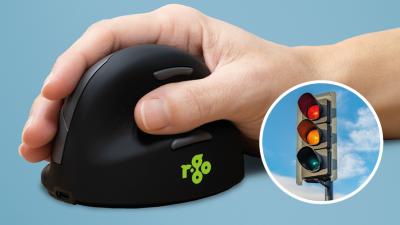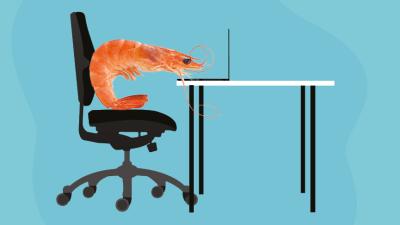Are sit-stand desks the shining future of healthy, productive computer work, or the standing joke of the decade?
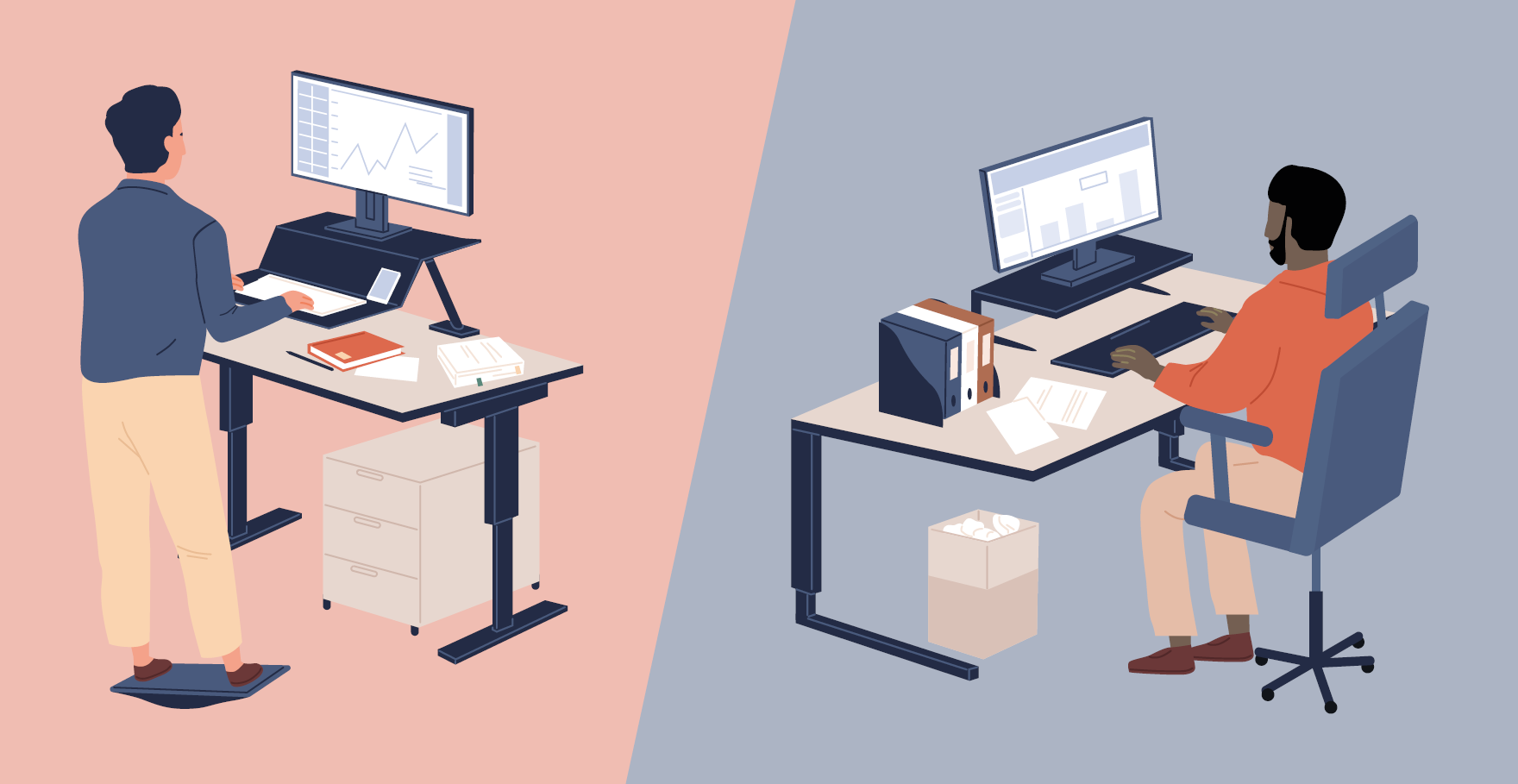
While the concept of standing up to carry out desk work is nothing new (even Leonardo Da Vinci is said to have used a standing desk to create his Renaissance masterpieces), many people are still wondering if standing desks are worth it. Do they really make a difference to how we feel and perform at work, or are they just a gimmick?
Myths about standing desks
1. You're supposed to stand up all day
Fans of the US Office might remember the scene where Dwight used a standing desk to elevate himself literally and, in his eyes, symbolically, above his co-workers. Justifying his new workstation, he says: "Picture someone doing something heroic. Now, is he sitting, or standing?" The joke quickly turns on Dwight when, having publicly declared standing to be superior, he doggedly refuses to be seen sitting at any point - even on his lunch break. Well and truly fatigued, he eventually - but not at all convincingly, conceals a walking stick up one trouser leg so he can rest while still appearing to be upright: a decision that ultimately results in his (literal) fall from grace.

The lesson here? Don't take standing desks too literally (and try not to be your office Dwight). The healthiest way to use one is to move regularly between both sitting and standing.
Sitting for too long slows the metabolism, reducing the ability to regulate blood sugar and blood pressure, and metabolise fat, which can cause weaker muscles and bones, leading to potential musculoskeletal disorders.
Standing for too long can result in blood pooling in the legs, increasing pressure in the veins and eventually even leading to cardiovascular problems.
Instead of staying in one place all day and ending up fatigued, for every half-hour chunk, try sitting for 20 minutes, standing for eight and moving for two.
2. Standing desks are an expensive gimmick
Gimmicky products look appealing but are largely useless. There are no shortage of gimmicks in the health and wellbeing industry, but sit-stand desks aren't one of them. Firstly, every computer-user needs a desk, and even if you eventually fall out of love with sit-stand working, your standing desk will still function as a sitting desk - and at least you'll always have the option to stand if the fancy takes you.
Secondly, our sit-stand desks are built to last. Some products are used until the novelty wears off, and then discarded. Our sit-stand desks are designed to be used every day for years. As for expensive...while a standing desk isn't exactly an impulse buy for most, our prices start at £198 (for the VariDesk® Laptop 30™), making a small height-adjustable platform reasonably affordable and great as an introduction to a more active way of working.
3. They don't do anything for your health
It's true that swapping some of your sitting time for standing is unlikely to result in noticeable weight loss or muscle gains. If this is your goal, you're better off kickstarting a workout regime and assessing your diet. Your sit-stand desk is not fitness equipment. It's a wellbeing tool.
With the freedom to move between sitting and standing, you're less likely to get caught up in prolonged sedentary postures. Spending too long in one place - especially sitting, can result in aches, pains, fatigue and a drop in productivity. Your breathing and circulation could be affected by sitting for too long, so the simple act of standing up, activating your leg and core muscles and raising your heart rate slightly, should help oxygenate and revive your body.
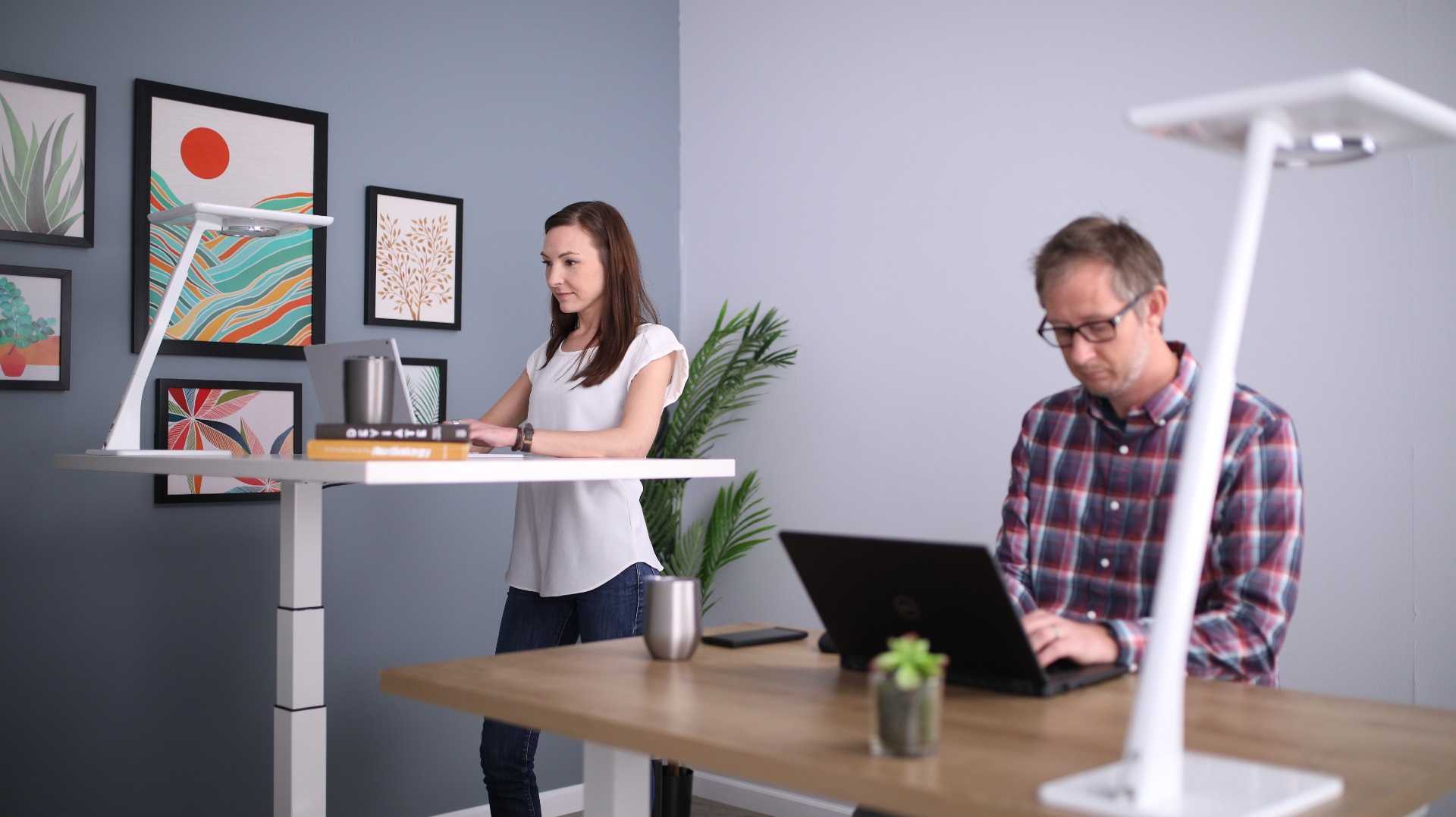
A study by UCL found that using an Opløft Sit-Stand Platform for a week significantly improved the performance of usually sedentary office workers. Lead researcher Professor Walsh said, “our research revealed that workers using Opløft were twice as competent in their decision-making skills, and their language-based problem skills improved by 64%. They also completed tasks measuring concentration and vigilance 10% faster and made 45% fewer mistakes. Their creativity also improved by 28%.”
Standing desk popularity is on the rise
Despite the myths and misconceptions, standing desks are in high demand. Especially since the pandemic. Over 20% more people searched for standing desks in the UK in the past 12 months than the previous year.
Why are standing desks so popular now?
Sit-stand desk popularity is on the rise for a number of reasons, including:
- Hybrid working is the new norm and people working from home are taking control of their own workplace health and wellbeing. With less space to roam, being able to stand to work is a great way to stay active and energised.
- There is an increasing body of research highlighting the risks of sedentary behaviour.
- People are noticing the physical and mental health benefits of standing desks.
- Increasing interest has a domino effect: sit-stand desks are appearing more often in the office and in enviable WFH-set-up photos on social media, making people more keen to give them a go.
- More options on the market at a lower price, from sit-stand converters, to full size electric desks.
What are the benefits of standing desks?
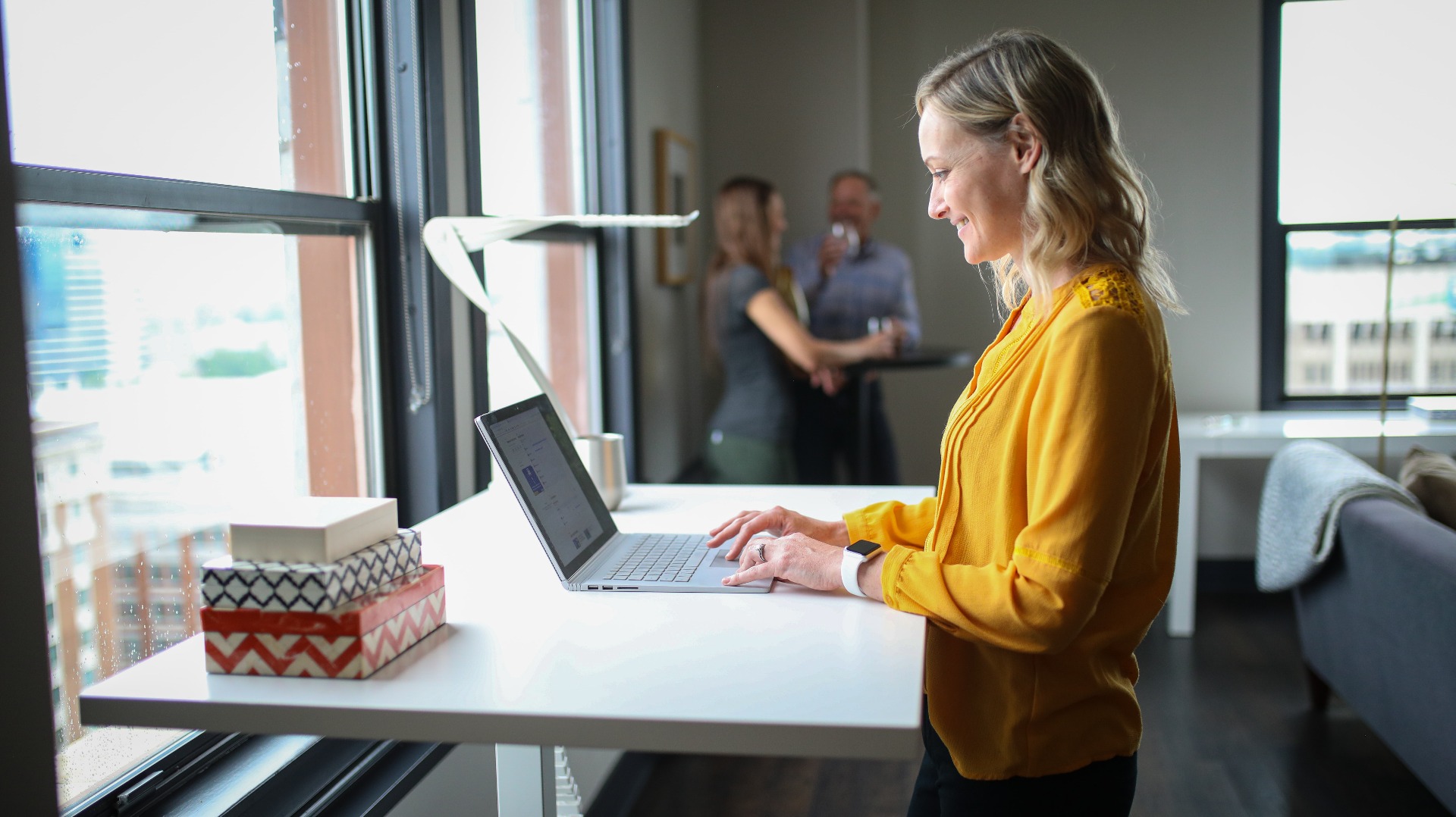
How are standing desks good for you? After a few weeks of use, you might notice a variety of sit-stand desk benefits, including:
- Mildly boost your daily activity levels: It doesn't seem like much to stand up and sit down, but the transition activates your leg and core muscles, slightly increases heart rate and boosts calorie burn.
- Relieve pent-up tension: You may not even realising you're tensing your body, but feelings of stress can cause you to contract your muscles (fight reflex), which can lead to injury over time. Moving positions regularly keeps you aware of your body and gives you a chance to shake out any tense areas.
- Feel more confident: Dwight wasn't 100% wrong when he claimed standing to be superior. A theory published in the journal Psychological Science argued that certain power poses (including standing) could help reduce stress hormones and increase feelings of confidence and energy. So, if you're dealing with a tricky situation at work and you need to feel emboldened, try standing up.
- Improve your work performance: Research shows that switching to a sit-stand desk can help improve decision-making skills, problem-solving, accuracy and creativity.
To conclude: yes, standing desks are still popular. There are several sit-stand desk benefits proven by science and reported by users that make this form of working superior to traditional sedentary work (thanks, Dwight). Bear in mind that standing desks should be height adjustable so that you can swap positions regularly. You can browse all of our high quality standing desks and platforms here.








